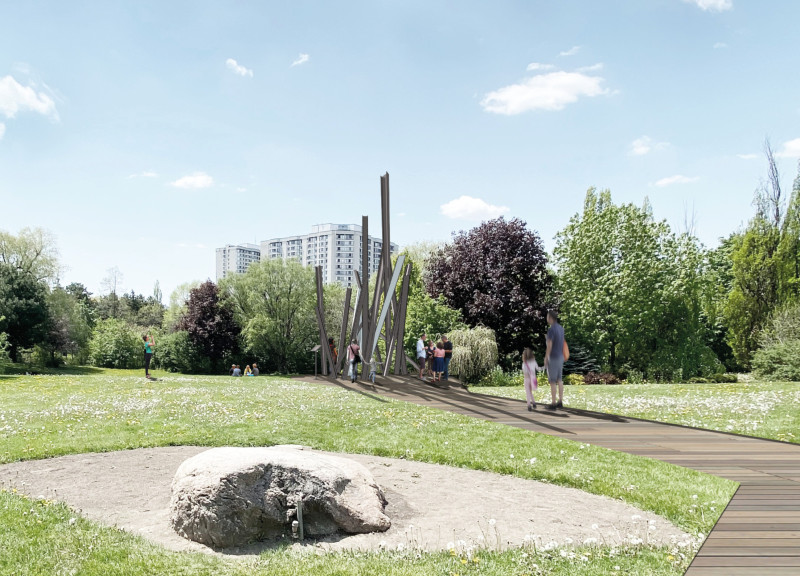5 key facts about this project
"Materialized Memory" is located in Donald M. Gordon Chinguacousy Park in Brampton, Canada. It serves as a memorial dedicated to the victims of genocide. The design explores the themes of remembrance and the need for collective awareness of historical atrocities. A circular layout symbolizes the globe, allowing for an inclusive acknowledgment of victims from various backgrounds and histories.
Architectural Concept
The concept of the memorial is rooted in the definition of genocide. It focuses on the physical and emotional effects this violence has on humanity. The design features massive, rough elements arranged in a chaotic manner. This reflects the disruption caused by genocides and the trauma that follows. Visitors experience a sense of disorder that encourages deep engagement, prompting them to think about the lessons of history.
Integration with Landscape
Visitors approach through a pathway from Chinguacousy Trail to the Clock Circle. Metal pillars are placed within the existing landscape, acting as markers that extend the context of the site. This connection between the memorial and its natural surroundings enhances its significance and creates a dialogue between the environment and the act of remembrance.
Educational Elements
The memorial features educational components that offer context about the historical events connected to genocide. Information plates near the structure provide insights, while a QR code enables access to updated information. This integration ensures that educational aspects will remain current, allowing visitors to engage with the content as they explore the memorial.
Soundscape Experience
Audio recordings of documentary accounts enrich the visitor experience. These sounds help honor the lives lost and encourage reflection. By weaving this soundscape into the design, the memorial deepens the emotional connection for visitors, inviting them to reflect on their role in the ongoing narrative of remembrance.
The arrangement captures the contrast between refuge and tragedy. The placement of the elements provides a visual reminder of humanity’s resilience amid historical violence while prompting visitors to reflect on their place within this shared history.






















































